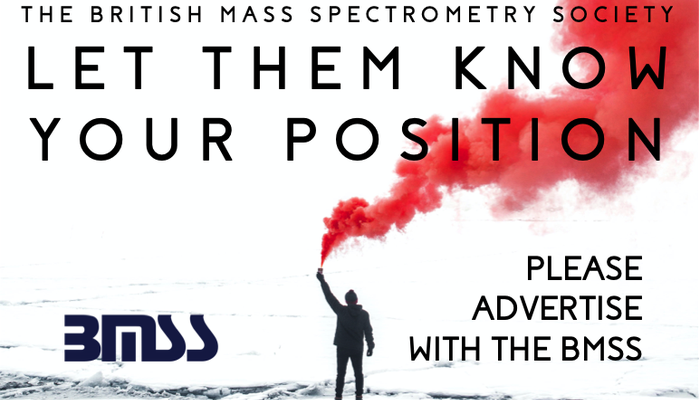Scientific Programme
This year our Plenary Speakers are Professor Morgan Alexander (University of Nottingham) on Orbi SIMS (single cell imaging using mass spectrometry) and Dr Ed Emmott (University of Liverpool, UK) on single cell proteomics.
|
09:00 |
Registration coffee and vendors |
|
||||||
|
09:45 |
Meeting Opening |
|
||||||
|
10:00 |
Keynote: Single cell proteomics, Dr Ed Emmott, University of Liverpool |
|||||||
|
10:30 |
Single Cell Spatial-Omics from Culture Using DESI-MS: First Steps and Future Directions, Emrys Jones, Waters Corporation |
|||||||
|
10:50 |
Single Cell Lipidomics - How confidently can we identify lipids? Johanna von Gerichten, University of Surrey |
|||||||
|
11:10 |
Coffee and vendors |
|||||||
|
11:30 |
Picosecond laser desorption - rapid evaporative ionisation mass spectrometry (LD-REIMS) imaging towards single-cell resolution, Robert Murray, Imperial College London |
|||||||
|
11:50 |
Using Single Cell Proteomics to Analyse Protein Changes in Huntington's Disease, Georgina Charlton, UCL |
|||||||
|
12:10 |
Metabolic impact investigation of lipid nanoparticle vaccine delivery using OrbiSIMS, Reece A. Franklin, University of Nottingham |
|||||||
| 12:20 |
The development of macrophage models of infectious diseases using Single Cell - Inductively Coupled Plasma - Mass Spectrometry (SC-ICP-MS), Claire Davison, University of Surrey |
|||||||
|
12:30 |
Lunch, posters, vendors |
|
||||||
|
13:30 |
Lab tour |
|||||||
|
14:30 |
SEISMIC Session : a series of talks from the first users of the BBSRC SEISMIC facility for single cell omics on the biological need for single and sub cellular analysis: |
|||||||
|
14:30 - Prof Nicolas Locker, Pirbright Institute: Single and sub-cellular analysis in virology 14:40 - Dr Fernando Martinez Estrada, University of Surrey: single cell lipidomics in immunology 14:50 - Dr Kasia Wolfmeier, Kings College London: towards sub-cellular measurement of radioactive Thallium for cancer treatment 15:00 - Dr Dany Beste, University of Surrey: single cell analysis in tuberculosis 15:10 - University of Manchester TBC 15.20 – Kyle Saunders, University of Surrey: single cell analysis in radiation biology |
||||||||
|
15:30 |
Coffee and vendors |
|||||||
|
15:50 |
Keynote: Single cell OrbiSIMS lipidomics study of biomaterials in vitro and in vivo, Professor Morgan Alexander, University of Nottingham |
|||||||
|
16:20 |
Poster prizes and wind up |
|
||||||
|
16.30 - 17.30 |
Social - visit to a local pub OR SEISMIC steering group meeting, for SEISMIC staff and steering committee members |
|
||||||
Keynote Abstracts
Professor Morgan Alexander, University of Nottingham.
Single cell OrbiSIMS lipidomics study of biomaterials in vitro and in vivo
The direct analysis benefit offered by SIMS over digestion and bulk analysis of biologics has largely been outweighed in the life sciences by the molecular fidelity provided by bulk Liquid Chromatography Mass Spectrometry (LC-MS). SIMS does have the advantage of it being a direct analysis approach with imaging capability, but global analysis of endogenous compounds has been limited by the close proximity of diagnostic secondary ion peaks for organic molecules in the mass spectrum.[1] The 3DOrbiSIMS hyphenation of ToF SIMS with an OrbiTrapTM was conceived and demonstrated by Ian Gilmore of NPL, bringing SIMS closer to the requirements for analysis of complex biological systems. [2]
Drug development, bacterial biofilm prevention, regenerative medicine, and biology fundamentals all benefit from 3DOrbiSIMS with the potential for localising of exogenous and endogenous compounds in cells and tissues and the biointerfaces that they form with synthetic materials. SIMS has been applied and highlighted lipids of importance in these systems over the years, but the advent of the high mass resolving power of the Orbitrap has opened an equivalence to state-of-the-art LC-MS studies, but at the single cell scale.
Critically, the large spectral data files with thousands of peaks require automated untargeted analysis to make the most of this information. These have been enabled by the methodology for molecular formula prediction (MFP) assignment adapted to SIMS by Edney et al. [3]
To illustrate the importance of this analytical capability in life science studies, I will focus on the importance of the lipids in one example revealed by OrbiSIMS analysis. Single immune cell characterisation in vitro was found to correlate with in vivo tissue next to implants. [4,5] I will share our evolving understanding of how medical implant fibrosis progresses from biointerfacial OrbiSIMS analysis [Bin Sabri unpublished]
References
- Mass spectrometry and informatics: distribution of molecules in the PubChem database and general requirements for mass accuracy in surface analysis. FM Green, IS Gilmore, MP Seah (2011) Analytical Chemistry.
- The 3D OrbiSIMS: Label-free metabolic imaging with subcellular lateral resolution and high mass-resolving power. Passarelli et al. (2017) Nature Methods.
- Molecular formula prediction for chemical filtering of 3D OrbiSIMS Datasets. Edney et al (2022) Anal Chem.
- Single-cell metabolic profiling of macrophages using 3D OrbiSIMS: Correlations with phenotype. Suvannapruk et al. (2022) Anal Chem
- Spatially resolved molecular analysis of host response to medical device implantation using the 3D OrbiSIMS highlights a critical role for lipids. Suvannapruk et al. (2024) Advanced Science.

